 |
 |
 |
| |
EFdA OFFERS COMPLETE PROTECTION FROM REPEATED PENILE HIV CHALLENGES
|
| |
| |
Pre-exposure Prophylaxis with EFdA Offers Strong Protection against High Dose Mucosal HIV Challenges - [Long-Acting New NRTI for Treatment & PrEP]
CROI 2022 Feb 11-16
Written by Jules Levin
Martina Kovarova1,2,3, Sarah E. Wessel1,2,3, Claire E. Johnson1,2,3, Myron S. Cohen4, J. Victor Garcia1,2,3
1 International Center for the Advancement of Translational Science, University of North Carolina at Chapel Hill, Chapel Hill, NC, USA. 2 Division of Infectious Diseases, Department of Medicine, University of North Carolina at Chapel Hill, Chapel Hill, NC, USA.
3 Center for AIDS Research, University of North Carolina at Chapel Hill, Chapel Hill, NC, USA
4 Institute for Global Health and Infectious Diseases, University of North Carolina, Chapel Hill, NC, USA
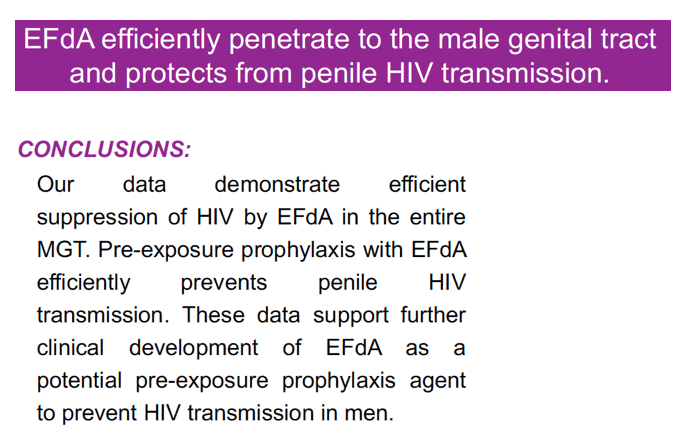
program abstract
Background:
Unprotected heterosexual intercourse is the most common route of HIV transmission. Men comprise approximately half of the HIV-infected population worldwide. Sexually transmitted HIV infections in exclusively heterosexual men are acquired through the penis. Prevention methods for this mode of transmission are condom use and circumcision. However, low adherence to condom use and the fact that 40% of circumcised men are not protected highlight the need for additional more effective prevention strategies. We tested 4'-ethynyl-2-fluoro-2'-deoxyadenosine (EFdA), a potent NRTTI with low cytotoxicity, for the prevention of penile HIV transmission.
Methods:
Male genital tract (MGT) of bone marrow/liver/thymus (BLT) humanized mice was evaluated for human cell reconstitution by flow cytometry. Location of human cells in the MGT was assessed by immunohistochemistry and compared to human tissue. HIV infected BLT mice were treated with EFdA orally (1.8 mg/kg) and suppression of the HIV infection in MGT tissues evaluated to confirm EFdA penetration. BLT mice treated with EFdA (n=9) or untreated (n=11) were exposed to multiple doses of transmitted/founder HIVCH040 via the penis. Animals were evaluated for HIV infection for 4 weeks after last HIV exposure (DNA and RNA).
Results:
MGT of BLT humanized mice including testes, epididymis, seminal vesicles, prostate, and urethra were repopulated with human T and myeloid cells and their location within tissues was comparable to human. The majority of the human T cells in the MGT express CD4 and CCR5 and were susceptible to HIV after intravenous exposure to HIV. Treatment of HIV infected BLT mice with EFdA results in a dramatic reduction (2-3 log) in HIV replication and the restoration of CD4+ T cell levels throughout the entire MGT, demonstrating the efficient penetration of EFdA into the entire MGT. Penile exposures to HIVCH040 resulted in systemic HIV infection in 6 of 11 humanize mice. None of the mice treated with EFdA became infected (p=0.0117).
Conclusion:
Our data demonstrate efficient suppression of HIV by EFdA in the entire MGT. Pre-exposure prophylaxis with EFdA efficiently prevents penile HIV transmission. These data support further clinical development of EFdA as a potential pre-exposure prophylaxis agent to prevent HIV transmission in men.
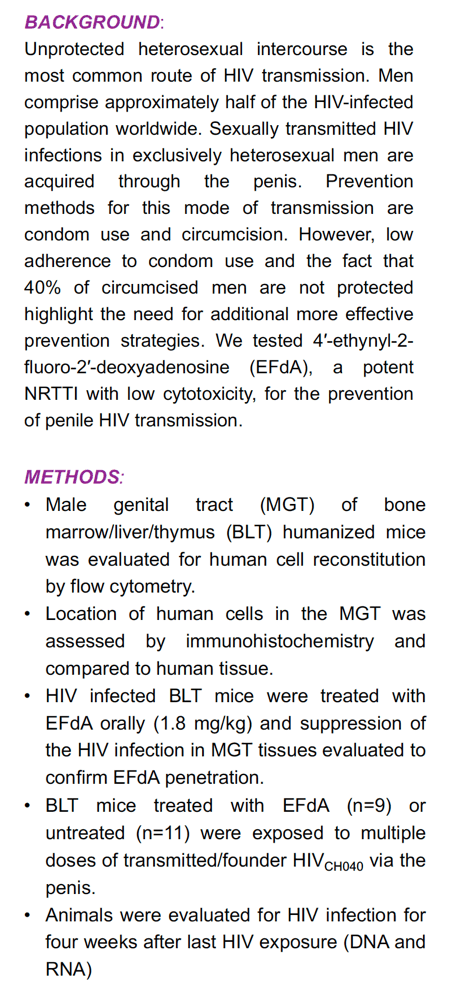
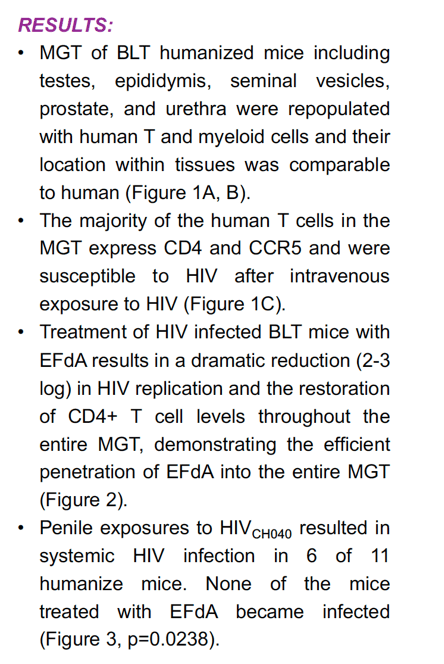
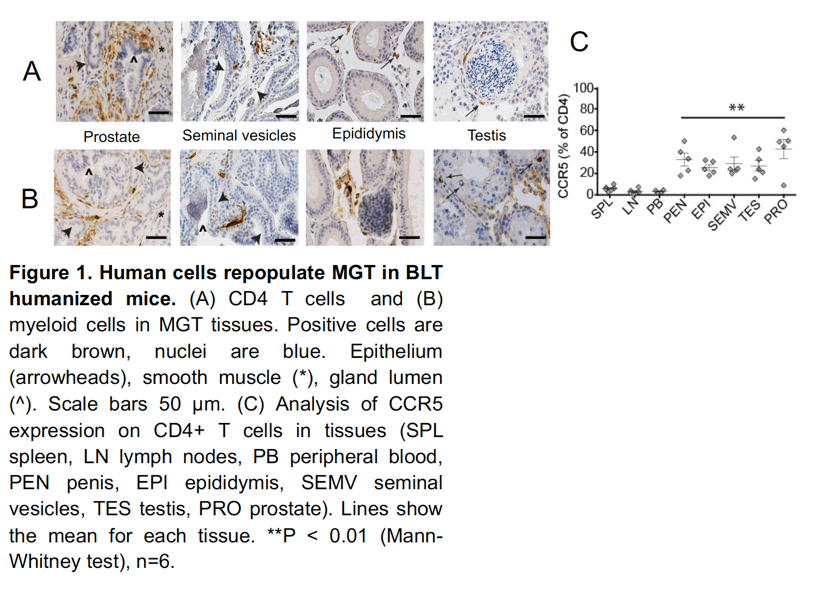
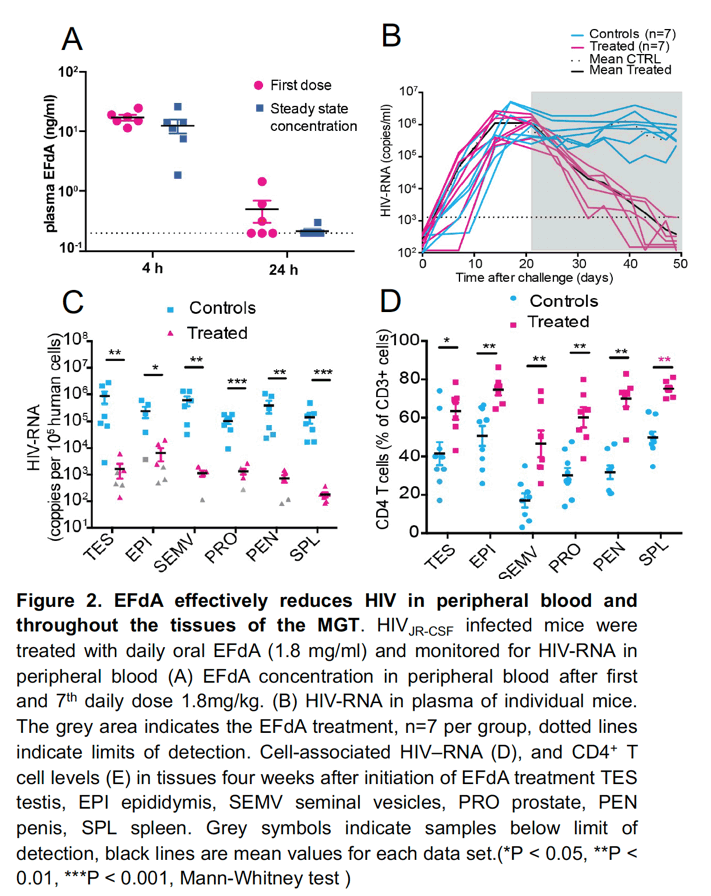
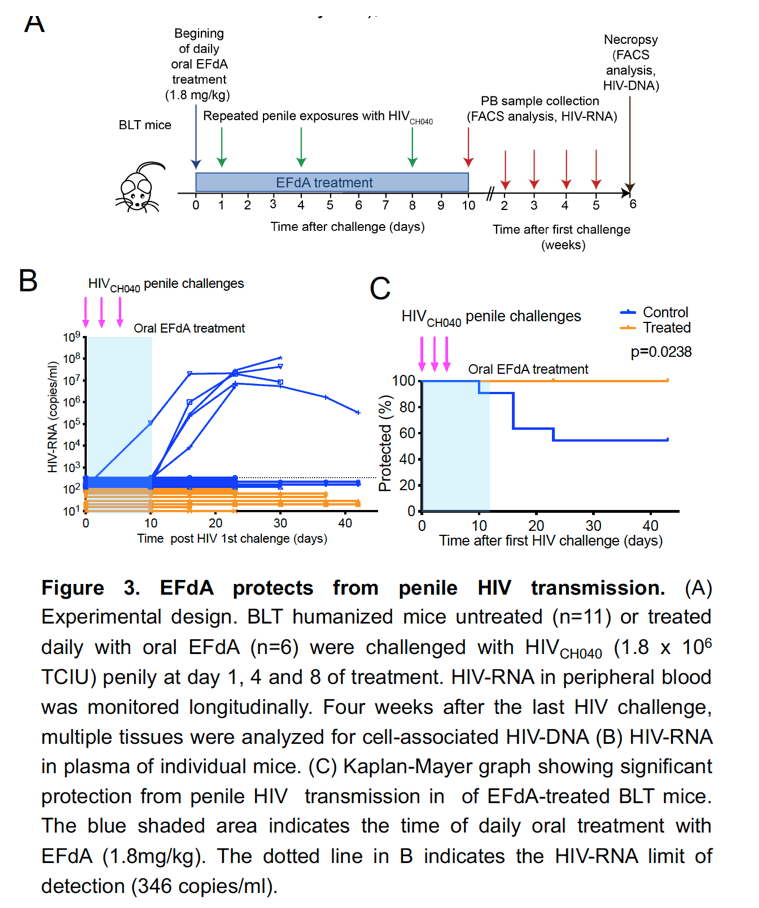
|
| |
|
 |
 |
|
|